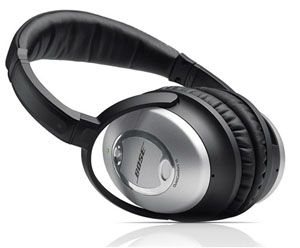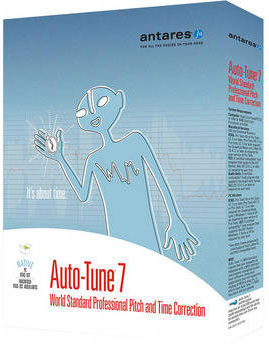 It seems that identifying and posting what kind of headphones the Olympic athletes are wearing was a quite popular thing to do, so why not continue? Troy Dumais, the American diver, was seen several times wearing his Bose QuietComfort 15 Acoustic Noise Cancelling Headphones.
It seems that identifying and posting what kind of headphones the Olympic athletes are wearing was a quite popular thing to do, so why not continue? Troy Dumais, the American diver, was seen several times wearing his Bose QuietComfort 15 Acoustic Noise Cancelling Headphones.
Athletes frequently wear headphones like these because it helps them focus as they isolate themselves with noise reduction and great audio quality for music. Michael Phelps, for example, wears the SOL REPUBLIC Tracks. American Olympic swimmer, Anthony Ervin and diver, Kristian Ipsen, and Chinese swimmer Sun Yang wore Monster Power Beats by Dr. Dre High Definition Isolation headphones
These headphones are silver and elegant, providing around-the-ear comfort, advanced noise reduction (according to the Bose website), and of course, the outstanding sound quality we’ve come to expect from Bose over the years.
The QuietComfort 15s also offer a feature that is becoming quite common in noise-cancellers, the inline microphone and remote control for iPhone and iPods.
To check out more details and/or purchase a pair, Click Here
Audio Recording
What Are Gain Stages In Audio Recording And Live Sound?
The term gain stages basically refers to all the points in an audio set-up (either for recording or doing live sound) where something can be turned up. And if it can be turned up, that means it cam possibly distort, which we will state for the record is bad – in any case where you aren’t doing it on purpose for some effect. The trick is to make sure you have enough signal at every stage but not too much, or you get distortion. But also not too little at any stage, or the stage after it will have to be turned up too loud to compensate, which can increase noise like hiss and hum.
Let’s look at an example. In a live sound situation (where a band’s microphones and instruments are all going through a mixer and PA system) an electric guitar’s first gain stage is the volume knob on the guitar itself. Next in the chain is the amplifier, which also has volume and gain knobs. Next comes the mixer, which will have at least two gain stages – the input gain/trim and the master output volume. But there is also the channel strip fader, and if you run the electric guitar channel through any effects, there is another gain stage. And some PA amplifiers and speakers also have volume controls, so there is another couple of gain stages.
So in order to get the best sound out of any audio source in both recording and live sound, you want to make sure you have a healthy signal level, but nothing that will cause any gain stage to be so loud that any of the audio distorts or clips anywhere in the signal chain. That process of ensuring the proper amount of signal without going over the “red line” anywhere is called “gain staging.”
In recording vocals, the main goal is to make sure your microphone sends the right signal level to the preamp (this can be adjusted on some microphones by a pad switch), which then sends the right amount of signal to the recorder or computer. Most audio interface units have a knob to control this level.
Here’s a video from Wink Sound that shows you an example with an electric guitar in a computer recording set-up.
10 Fascinating Things About Sound That You Probably Don't Know
Here is a really interesting post about a presentation made by international speaker and sound/audio expert Julian Treasure, author of the “Sound Business” blog. The video of that presentation can be seen below.
Treasure offers 10 things “you didn’t know about sound,” some of which are absolutely true, and some of which are a bit theoretical and heady – such as “your body is a chord.” Treasure makes some claims in this presentation about sound and its relationship to health that are followed by the statement – “…I hope [this] will be tested by researchers.“So just be aware of that.
One of the things he talks about is the auditory frequency range of humans – 20 Hz to 20,000 Hz – which is definitely true and impacts a lot of the standards for audio recording, especially things like digital audio and A-D (analog-to-digital) converters, and most specifically, sampling frequency. See our article What Is Sampling Frequency?
Anyway, the article is here: http://edition.cnn.com/2010/OPINION/10/10/treasure.sound/index.html
And the video of the presentation is below.
A Lack Of Passion In A Performance Can't Be Fixed By Effects, But…
 There’s something every recording engineer thinks about as they are tracking (recording) musicians doing their thing. That is “should I have them do it again or can I fix it in the mix?” In a perfect world, if we heard something not exactly perfect (a drummer bit off beat or a singer bit out of tune), we’d definitely have them do it again. But time and money, not to mention the attitude of the performer, are all issues that need to be considered. Luckily, there are tons of things that CAN be fixed in the mix, which is another way of saying corrected after-the-fact – usually by means of effects like compression, tempo correction and vocal tuning.
There’s something every recording engineer thinks about as they are tracking (recording) musicians doing their thing. That is “should I have them do it again or can I fix it in the mix?” In a perfect world, if we heard something not exactly perfect (a drummer bit off beat or a singer bit out of tune), we’d definitely have them do it again. But time and money, not to mention the attitude of the performer, are all issues that need to be considered. Luckily, there are tons of things that CAN be fixed in the mix, which is another way of saying corrected after-the-fact – usually by means of effects like compression, tempo correction and vocal tuning.
I read an article by Graham Cochrane this morning that basically says yes, you can fix a lot things in the mix, but passion in a performance isn’t one of them. His point is that effects plugins like a vocal tuning program can’t fix a passionless performance. You absolutely need to get that right BEFORE the mix stage. So the basic message is that effects are no help here. Graham does say that as the engineer, he can be made more comfortable knowing exactly what CAN be fixed in the mix by effects if he hears those things happen while he’s recording.
But I think there’s one thing Graham is not considering here. I believe that an understanding by the performer of what can and cannot be fixed in the mix can also free them up to be more relaxed and give a great performance. I’ve seen it over and over, especially among singers who made recordings before the prevalence of Auto-Tune. Back in the day, if a singer had a particularly challenging note, they would get very nervous before having to sing that part when recording. That tightness actually made it more difficult to get that note right. So after multiple takes, the singer would be extremely careful to hit the darned note, over-focusing on the pitch or tone and not really caring about the passion of the performance.

But then along came Auto-Tune. First, let me state that I think Auto-Tune (and other tuning programs) is way over-used in pop and country top 40 recordings. You shouldn’t just automatically snap every note to the grid the way so many producers do these days. But you can read about my thoughts on the proper use of Auto-Tune in my article – Auto-Tune – Any Tool Can Be Abused. The point is this – singers started to loosen up and worry a lot less about getting the pitch exactly right during the recording when they knew that it could be corrected in the mix! The existence of the effect plugin actually improved the quality of the performance, allowing a more relaxed and passionate delivery.
So though I agree with what Graham is saying in his article – you can’t add passion back into a flat performance with an effect plugin – I think it is worth noting that an effect plugin can make it more likely that you’ll get a passionate performance in the first place. We come full-circle:).
Here is Graham’s article: http://therecordingrevolution.com/2012/12/03/one-thing-plugins-cant-fix/
http://therecordingrevolution.com/2012/12/03/one-thing-plugins-cant-fix/http://therecordingrevolution.com/2012/12/03/one-thing-plugins-cant-fix/
Creating That Deep 808 Kick Sound With Logic's ES2 Synth
Back in the 80s, drum machines were becoming all the rage. Roland was one of the more popular manufacturers of these drum boxes, and one in particular, the TR-808, became very popular with the R&B, Rap, and Dance crowd – mainly for its very deep and booming kick drum sound. That sound became known in the zeitgeist as simply “808.” Check out the Urban Dictionary entry for 808 here.
Since the 808 sound continues to be relevant in the age of software-based recording studios, you can emulate it in a number of virtual instrument and synth programs. Below is a video from YouTube user, imamusicmogul that shows you how to get the 808 sound using a synthesizer program in Apple’s Logic recording software. It is included in both Logic Pro and Logic Studio.The synth program is called ES2, and is a very sophisticated virtual analog synth. There is a pretty detailed article in Sound-On-Sound about the ES2 here.
OK, so back to the video and the instructions for creating the 808 kick sound in Logic’s ES2:
For more articles on virtual drumming with your recording software – regardless of program or platform – see the articles in our “virtual drumming” tag by visiting this page – https://www.homebrewaudio.com/tag/virtual-drumming/